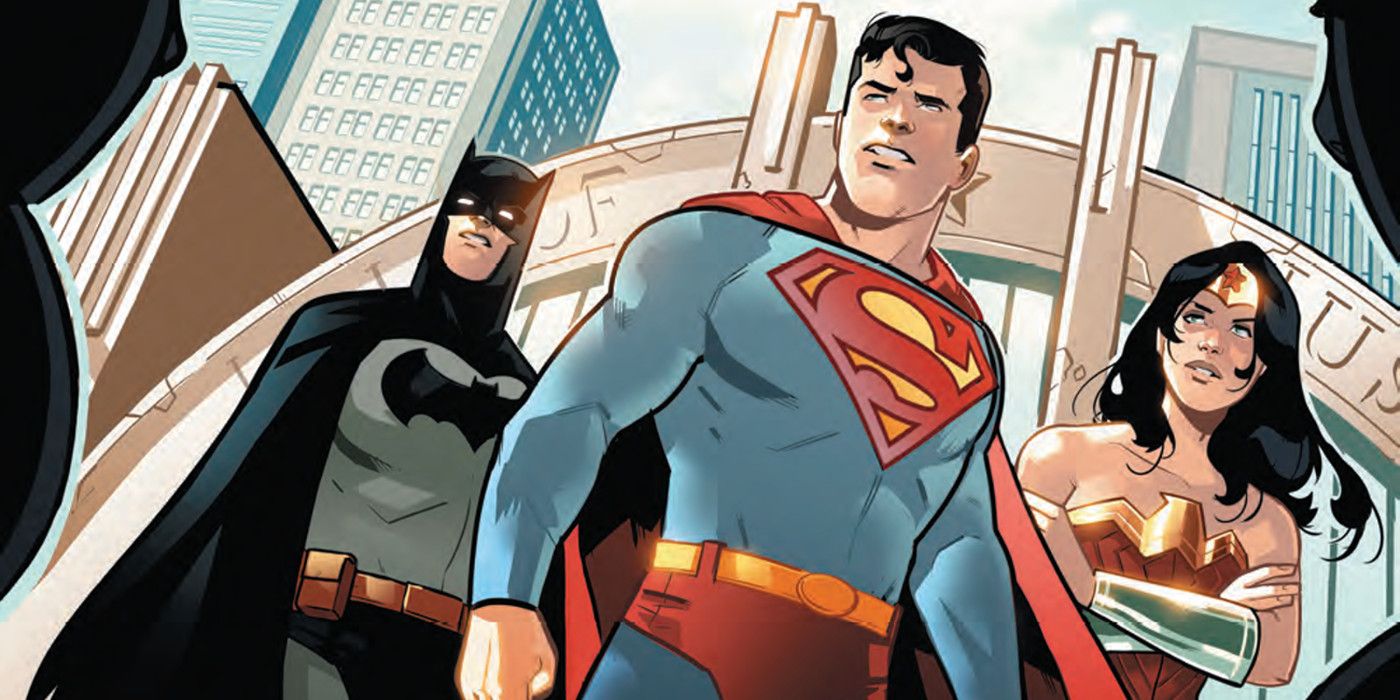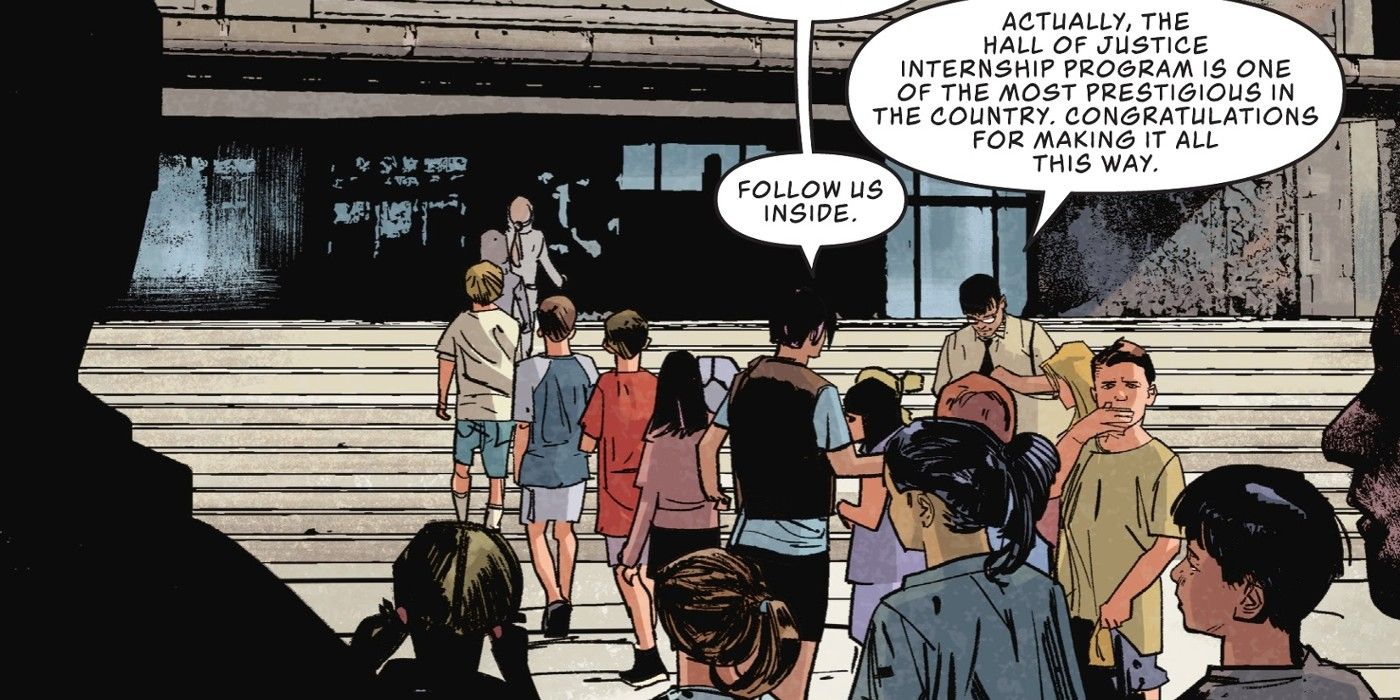Warning! Spoilers for Checkmate #5 ahead!
The Justice League’s legendary Hall of Justice represents a grave lapse in judgment by Earth’s mightiest heroes. The hall was intended to bring an inspirational, symbolic beacon of hope to the world, so the heroes created a prominent headquarters in Washington DC where they welcome visits by the public. Far from a secret base of operations, the Hall of Justice features public tours, trophy rooms, a gift shop, and an internship program.
Despite its friendly appearance, the Hall marks a dramatic shift from the JL’s previous home in space. First a moon base and then an orbiting satellite, the Watchtower kept the league within teleportation range of Earth and treated the headquarters as a command center, not a tourist destination with a Justice League panic room. Those tourists probably agree with the League’s assessment: the Hall of Justice represents hope, but there are also people critical of the league, its powers, and its location.
The Justice League’s darkest decision proves hero-haters right, because the Hall of Justice’s very existence threatens the entire world. In Checkmate #5, by Brian Michael Bendis and Dave Stewart, Shaw describes the Hall as one of the most sophisticated architectural feats on the planet. It sits atop multidimensional doorways, a network of transit points and chambers that hold untold, powerful secrets cultivated through decades of Justice League exploits. The Justice League believed their Hall to be an impenetrable fortress.
Yet Synmar Utopica razed the fortress and proved the league wrong. Instead of learning from their mistakes, instead of shifting back to space or elsewhere, the league rebuilds the Hall of Justice exactly as it was before the attack. This perpetuates an endless pattern of League hubris: impenetrable never works. When Clark revealed his identity to the world, the League rallied to secure the Kent homestead. Impenetrable, until Faultline dropped in for a visit.
The moon base Watchtower was impenetrable... until the Injustice Gang blew it up. The Fortress of Solitude, the Batcave, the satellite Watchtower, again and again these ultra-secure, no-way-to-fail headquarters keep failing. But the Hall of Justice raises the stakes by planting itself within the populace. An attack on the Fortress of Solitude disturbs the arctic, but even a minor disturbance at the Hall of Justice portends cataclysmic results. At best, surface-level attacks threaten the lives of civilians, but at worst, the Hall’s subterranean doorways give an enemy the ability to unleash attacks across the multiverse from within the building meant to protect it.
Hero-haters are resurgent in the DC Universe. In the current Fear State event, Gotham’s protectors face a city of vocal hero-haters, including Mayor Nakano. It’s easy to dismiss these protestors as misguided, even Nakano owes his life to Batman. Yet the Justice League’s decision to disregard the threat its base represents, to willfully ignore its own checkered history of catastrophic base explosions, attacks, and thefts, suggests that these noble heroes possess the superiority complex that protestors accuse them of. Checkmate #5 lays out the many dangers posed by a breach at the Hall. As Checkmate prepares to move against Leviathan, they will defend the Hall of Justice against Shaw, but they’re also trying to defend a multiverse from the darkest decision of the Justice League.


